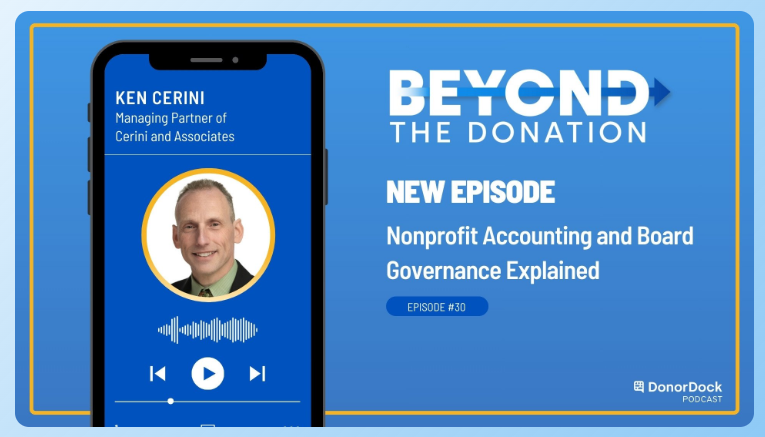Since the COVID pandemic started last March, many of you have gone on the defense, reacting to an onslaught of confusing, and sometimes ambiguous regulations, trying to develop plans of compliance, and hoping that definitive guidance would come within a time period that would make it meaningful to your operations. You and your staff have spent countless hours pivoting your programs to remote learning, establishing policies to keep everyone safe when in-person learning started up again, and now trying to determine how you want to handle vaccinations (Is a formal policy necessary? What do you do if an employee doesn’t want to get vaccinated?); Trying to understand the new social distancing rules (is 3 feet OK or not?); and trying to keep staffing patterns in place as one school year comes to a close and a new one gets started. Unfortunately, for many, crisis management has replaced strategic thinking, as you have fought to keep your schools afloat.
CARES Act funding has provided a much needed cash boost, for those of you who have been lucky enough to qualify. While PPP, ERTC, ESSR (for school age), and HHS (for programs who also have OPWDD/EI programs) have provided relief, for your tuition-based programs they are considered offsetting revenue and to the extent they result in underspending on your CFR, that underspending may need to be returned to SED (albeit without the normal on-going impact on your future rates). There is a bill in the New York State legislature, that if passed, could allow you to keep CARES Act funding, however this bill is for the 2021/22 year, so if you have already obtained forgiveness prior to that point, you may not be able to take advantage of the benefits that the bill will provide. If it does not pass, or you already received forgiveness, you will need to evaluate the different CARES Act funding your program received, how the funding impacts the various programs you operate (cost based or fee based), and really strategize on how to align the different CARES Act funding with your normal revenue streams to maximize how much forgiveness you will request or get to keep. If you haven’t already seen them, you can click the link for our webinar on this topic or related article. At this point, we are encouraging everyone to sit back and see how this potential legislation shakes out.
It has been the Rate Setting Unit’s (RSU) mantra for the last several years, that it is a priority to reduce the number of waiver requests they are receiving, however with reductions in student enrollment, shrinking student ratios due to changing need within the districts, spiking non-direct care screens due to the inability to provide related services at traditional levels in a remote learning environment, and more, it is likely that RSU will see a significant spike in waiver requests for the 2020/21 year and most likely the 2021/22 year also. This will surely mean a slow-down in cash flow for your school as RSU and DOB work through the large number of anticipated waiver requests.
I am sure you are aware that in April 2021, DOB approved the final methodology for the 2020/21 year providing for 0% rate increases, at the same time that school districts received an additional $9 billion in funding. The 2021 methodology did not really contain any significant changes from the 2019/20 methodology, except a safe harbor was added for decreases in enrollment in excess of 5%. The decrease in enrollment is calculated by comparing enrollment as a percentage of capacity for the 2020/21 year compared to the average enrollment compared to capacity for the 3 prior years (2016/17, 2017/18, and 2018/2019). If you have a drop of more than 5% as compared to the prior 3-year average, there will be a little something extra in your rate.
You also probably heard that there was no ETTP funding for the 2020/21 year. For those of you who have been paying their teachers the ETTP funding in the form of salary increases, the raises you provided during the 2019/20 year meet your on-going responsibility for the 2020/21 rate year, as the ETTP funding has been added to your 2019/20 rate and trended forward. We know, however, that some providers pay their ETTP out in the form of a bonus. If you did not convert the 2019/20 bonus into a corresponding salary increase, then you must provide your staff a salary increase or bonus in the 2020/21 year to cover the amount of the ETTP that was added to your 2019/20 rate and trended to 2020/21.
On April 12, 2021, SED submitted its proposed rate setting methodology to DOB for the 2021/22 year. At the end of May, DOB responded to RSU with the following approvals:
- While RSU requested a 7% trend factor for preschool special class programs, SCIS, SEIS, multidisciplinary evaluation programs, 1:1 aide rates and county preschool transportation rates, as well as school age providers, commensurate with the growth provided in state aid for school districts for the 2021-22 school year, DOB approved a 4% increase for all of the programs outlined above except MDE. While this fall short of the requested trend, it still provides much needed support to allow for salary increases for staff, that still significantly lag behind those paid by the districts.
- $8 million for ETTPP funding to be shared among the approved private preschool special class and special class in an integrated setting (SCIS) programs, nonpublic schools with an approved special education program (853 schools), and Special Act School District programs. The distribution formula used in prior years, based on a comparison of regional average teacher salaries, would continue and be incorporated into 2021-22 tuition rates for new awards.
- As in past years, additional funding to reimburse salary and related fringe benefit increases attributed to new minimum wage requirements to be added to tuition rates for school age providers and preschool special class and SCIS programs based on the results of a provider minimum wage survey.
- The continuation of tuition rate calculation flexibility first approved in 2018-19 to utilize the higher of two authorized rates, 2020/21 trended forward or your 2021/22 prospective rate, as the basis of the total cost screen calculation for school-age, preschool special class, and SCIS programs. Furthermore, for SCIS programs, the continuation of previously approved changes to the offsetting revenue adjustments for integrated programs (allowing adjustments to be based on actual revenue received).
- An enrollment adjustment factor to be applied as part of the rate reconciliation process to stabilize tuition revenue on a time-limited basis. For the 2021-22 reconciliation tuition rates, DOB approved the expansion of the enrollment adjustment factor to a 7.5 percentage point reduction or greater in enrollment-to-capacity percentage from the 2016-17 through 2018-19 three-year average enrollment-to-capacity percentage. This request is supported by enrollment survey data collected from providers in February 2021 that indicates a high percentage of providers were impacted by an enrollment decrease in the 2020-21 year due to the pandemic. SED anticipates that this low enrollment trend will continue into the 2021-22 school year.
- Elimination of final rate reconciliations where providers would experience less than a 1% change in the per-student reimbursement rate. This includes a 1% under or overspending. As such providers that underspend by less than 1% would get to keep the underspending, and conversely, if they overspend by less than 1%, they cannot ask for a waiver. Keep in mind that if a provider underspends by more than 1%, SED will reconcile the rates and recoup the full underspending. This has been in pace for several years for school age programs but is new for preschool providers.
- Extraordinary federal aid received by providers, including but not limited to federal Paycheck Protection Program (PPP) and Emergency Assistance to Non-Public Schools (EANS) revenue, be treated as offsetting revenue for 2021-22 reconciliation tuition rate calculations, with providers’ prospective rates in future years held harmless from the impact of extraordinary federal aid offset against expenses in a prior year’s tuition rate.
- In addition, DOB will continue to review waiver requests on a case by case basis.
RSU had requested additional provisions that were noticeably missing from the DOB’s approval letter, the most noticeable of which were:
- Elimination of annual reconciliation of tuition rates along with a recommendation that the prospective tuition rates for the following four years be established based on the prior year’s prospective tuition rate, plus approved annual trend factor and approved targeted funding initiatives, with a reconciliation of provider’s funding at the end of the five-year period. SED has requested this commencing with the 2022/2023 year to allow time for the special education provider community’s operations to stabilize in the wake of the COVID-19 pandemic. This is the same provision requested by SED as part of its 2020/21 methodology request to DOB. DOB does not seem to be thrilled with this provision.
- DOB’s expedited and streamlined approval on tuition waivers for 2021-22 reconciliation rates for providers impacted by either the non-direct care cost screen and/or the total cost screen as a result of extraordinary expenses incurred as a response to the COVID-19 pandemic. As outlined above, DOB will continue to evaluate waivers as requested, but it would have been nice to obtain DOB acknowledgement of the need for administrative and other waivers as a result of the pandemic.
Subsequent to the DOB’s rate methodology response to RSU, SED met with stakeholders, and based upon this meeting, SED agreed that they would respond to the Division of the Budget requesting that 4410 and 853 schools receive a 7% tuition increase which is the same increase as all school districts would be receiving this year. SED would also seek an extension of the enrollment adjustment factor (5%) that was approved in the final budget and request that multidisciplinary evaluation sites be included in the approved growth for 4410 programs.
On the OSC front, the OSC continues its mandate to complete audits of all 4410 programs. There were less audit reports issued during 2020 (approximately 10), due to COVID, but the activity seems to be picking up in 2021. Some of the key findings in the 2020 audits were:
- Fringe benefits (e.g. health and pension) need to be consistent for all staff within the organization (same benefits offered across the board … same coverage, deductibles, etc.), otherwise disallowances will occur.
- For-profit owners of the School, working within the organization, should be clearly identified as such within CFR-5 and their salaries (if not 601, 602, or 603), need to reflect the regional average of other 4410/853 programs … even though such information is not readily available or published by SED.
- Paid time off charged to an employee’s home department, even though the staff were allocated to multiple departments (PTO should have been similarly allocated).
- Lack of substantiation where substitutes and floaters worked within the programs, resulting in the OSC disallowing such costs.
- In addition, the OSC continues to identify allocation concerns, unsupported expenditures, and lack of support for old fixed asset purchases that continue to be depreciated.
The 2021/22 year will be an interesting one for providers. We have heard that MDE’s are up during the fourth quarter of this year, which is essential, as many children will be aging out of programs come September. New York City continues to express need within certain districts, as programs continue to evaluate their programming. We anticipate some additional program closures during the 2021/22 year due to enrollment, rent, teacher, and other issues.
At this point, all we can say is stay strong … and try to work on your school and not just in it. Strategic planning, analysis, policy setting, and effective staff recruitment and retention are going to be essential for the upcoming year. Continue to work with your advocacy agencies to make your voices heard … there seems to be interest at the State legislature level, which is a positive sign. Let us know if you need any help.
Read Full Special Edition Volume 25

Kenneth R. Cerini, CPA, CFP, FABFA
Managing Partner
Ken is the Managing Partner of Cerini & Associates, LLP and is the executive responsible for the administration of our not-for-profit and educational provider practice groups. In addition to his extensive audit experience, Ken has been directly involved in providing consulting services for nonprofits and educational facilities of all sizes throughout New York State in such areas as cost reporting, financial analysis, Medicaid compliance, government audit representation, rate maximization, board training, budgeting and forecasting, and more.





